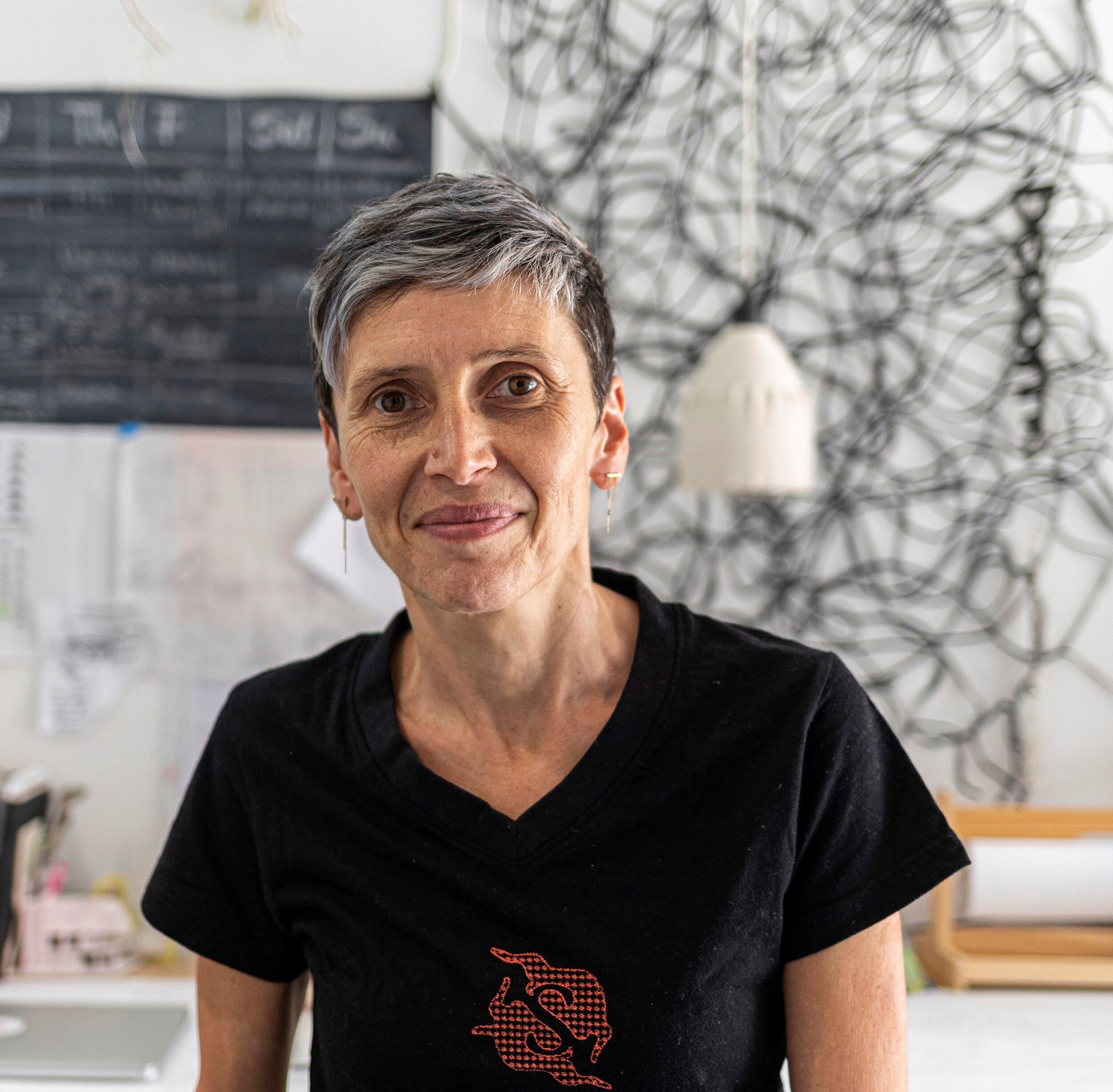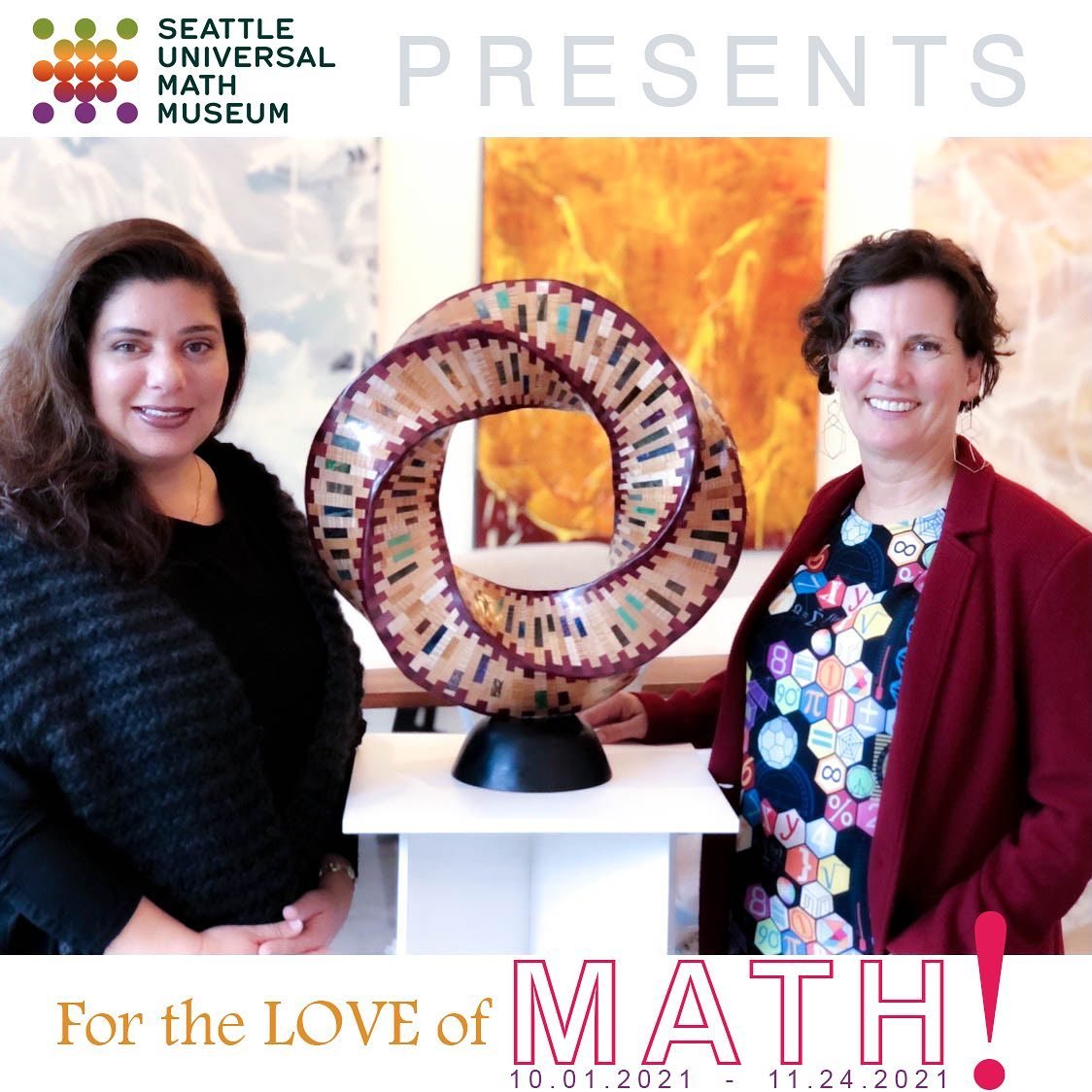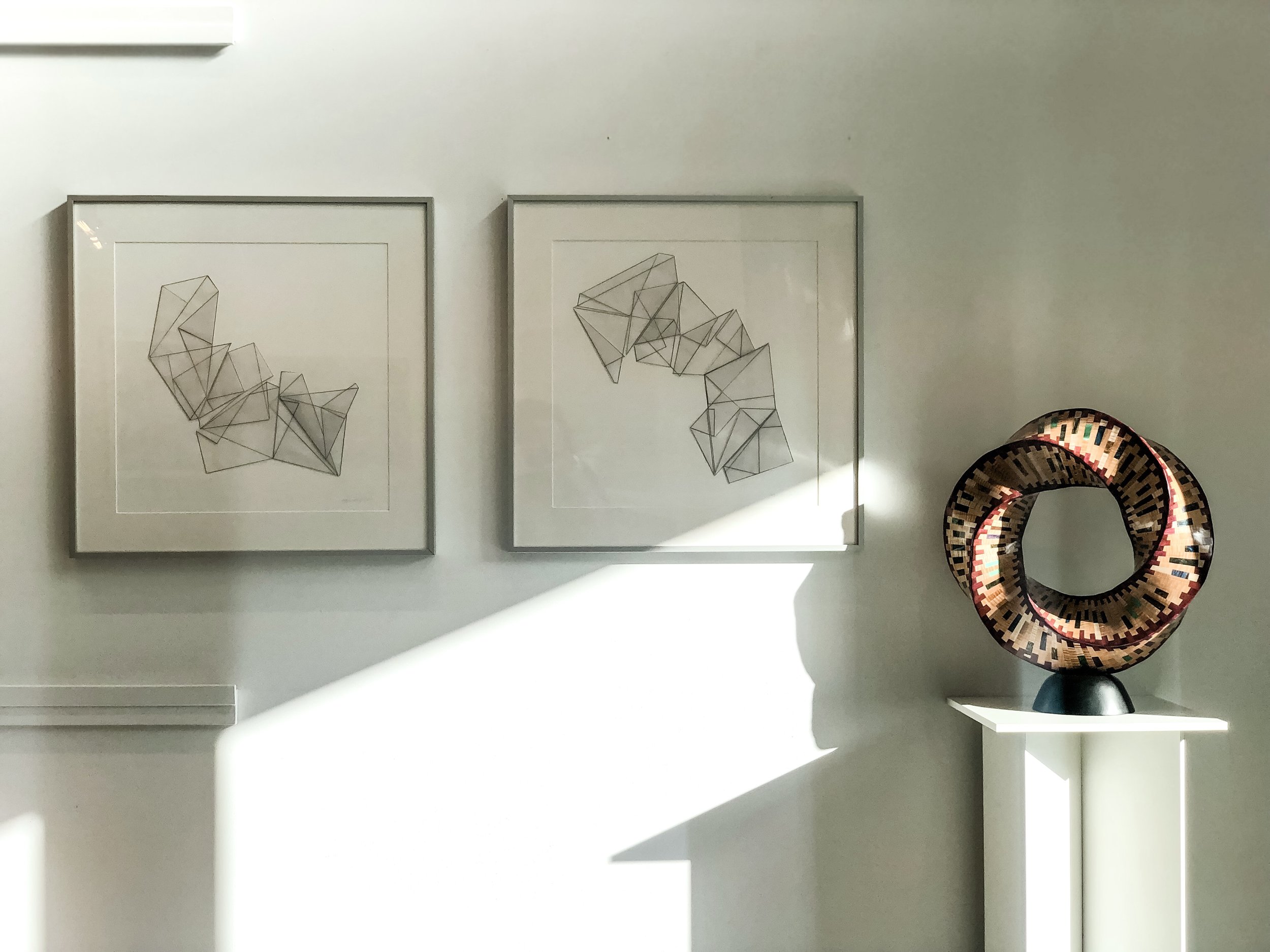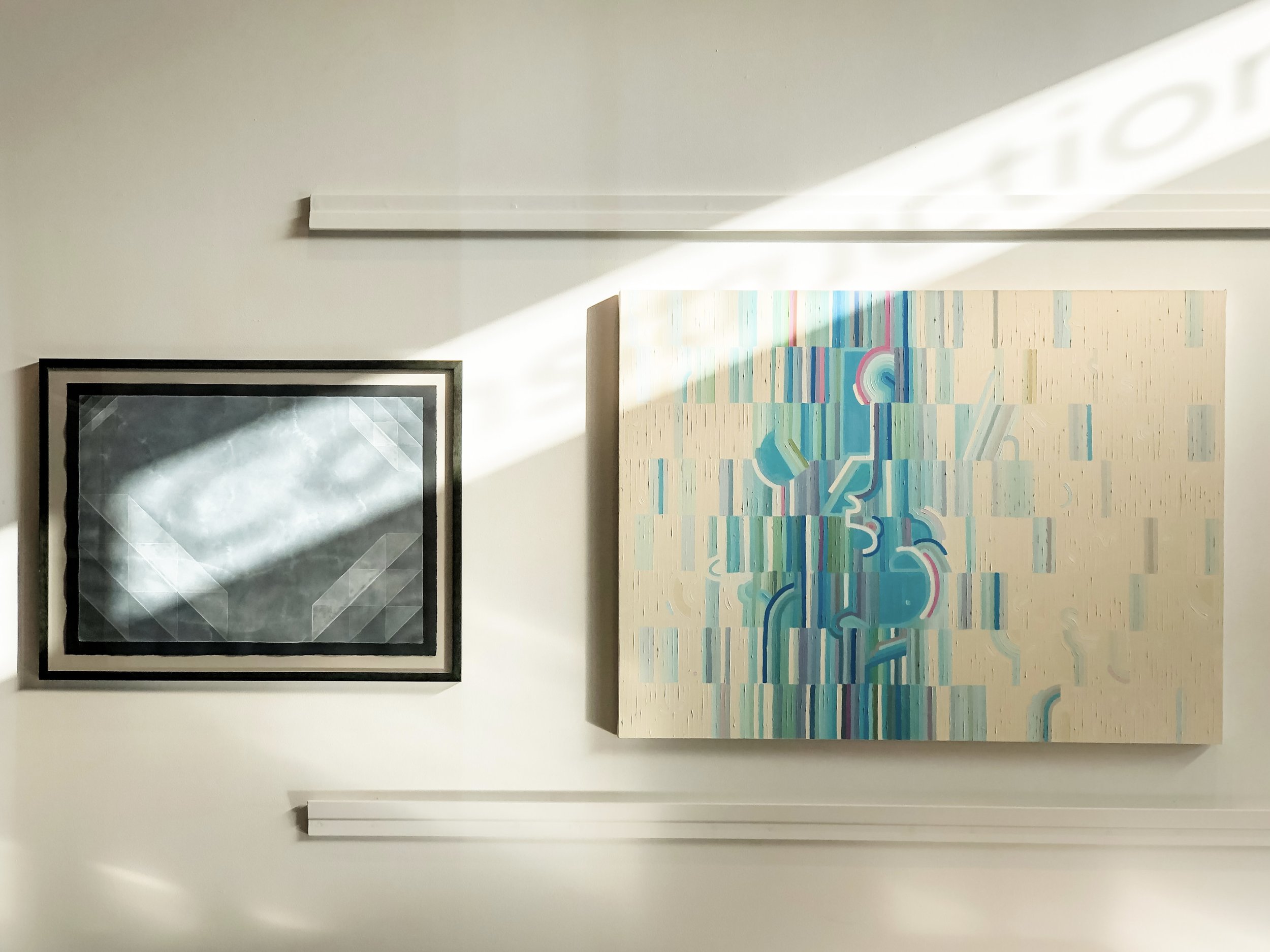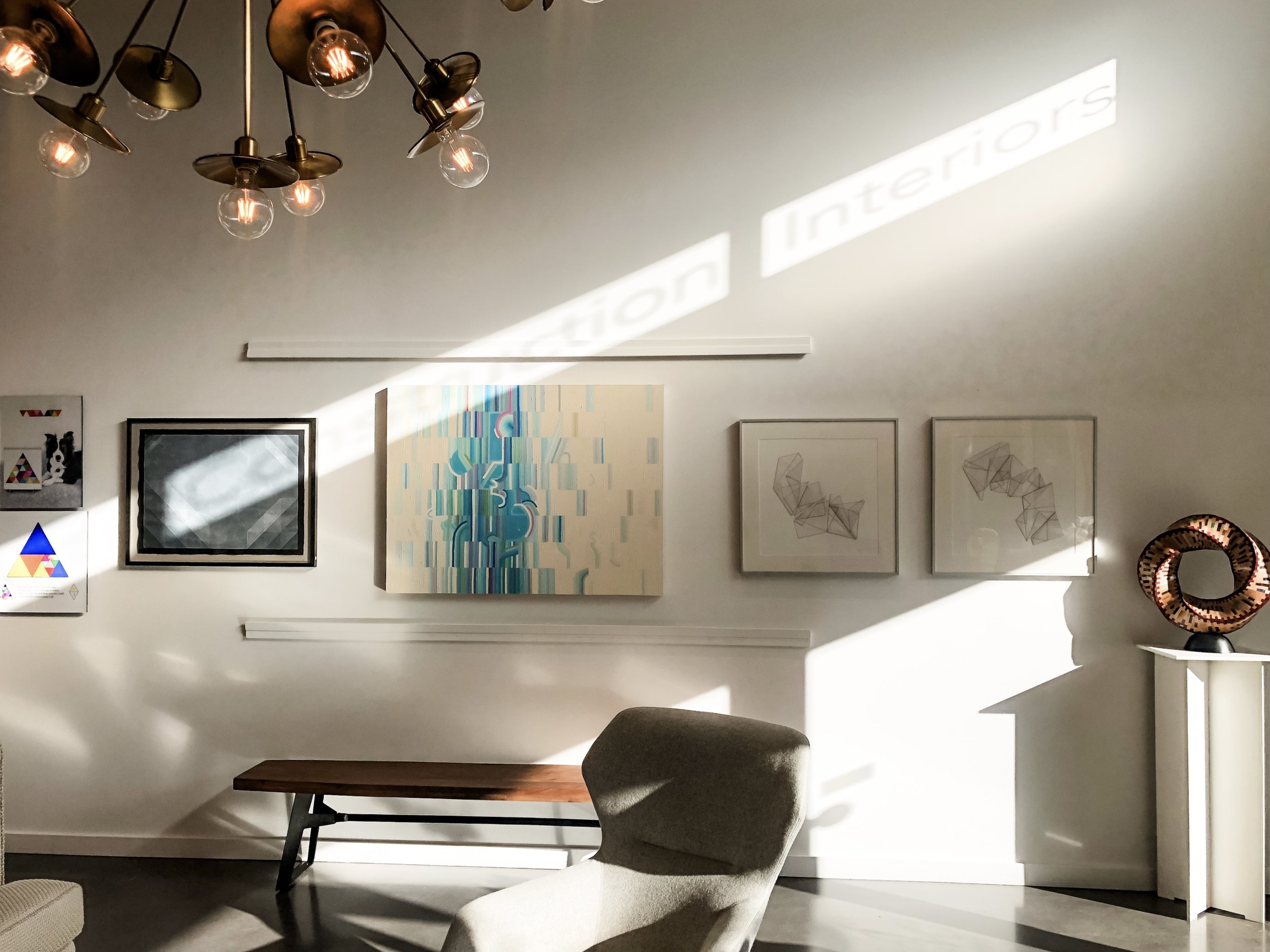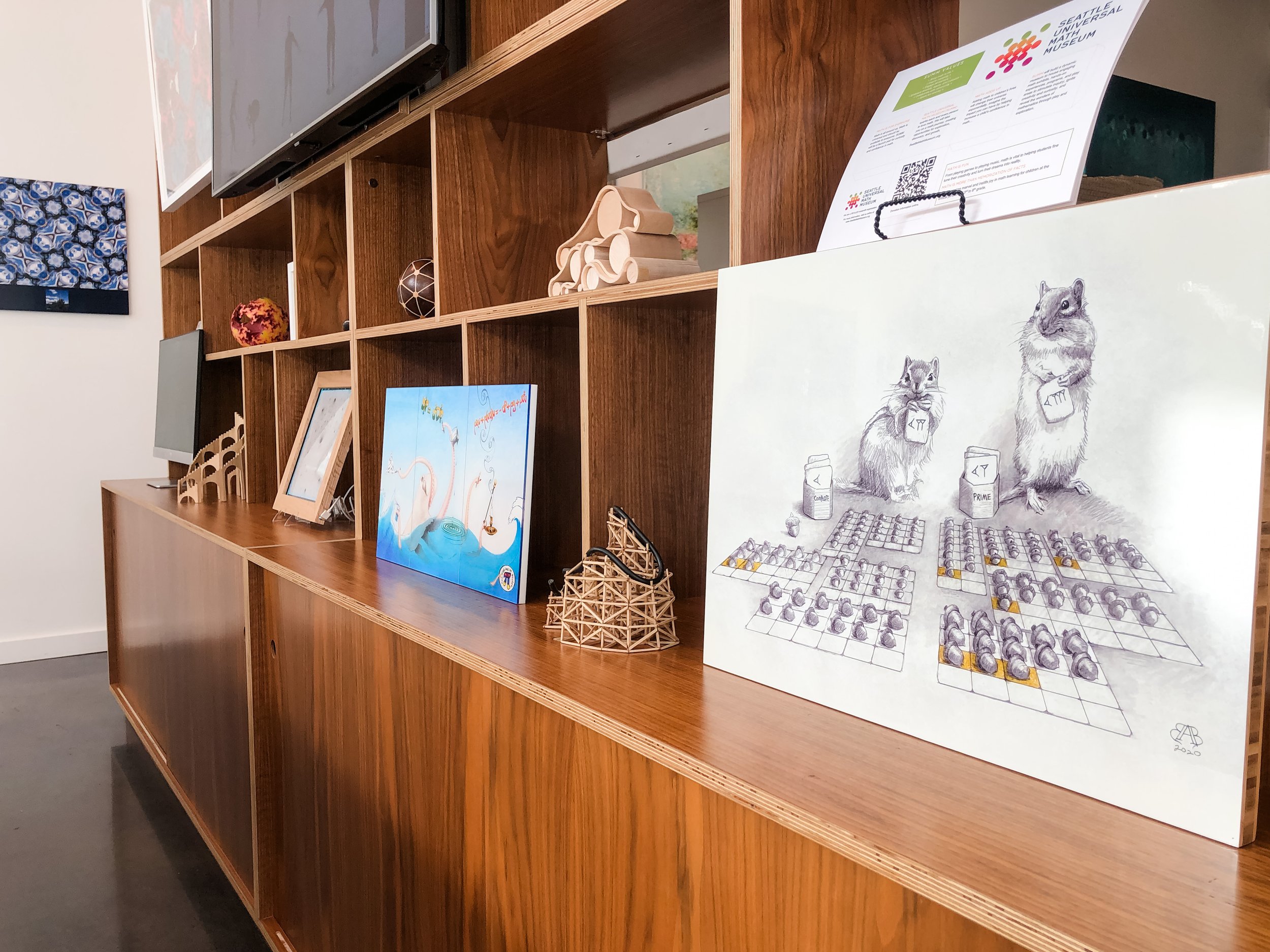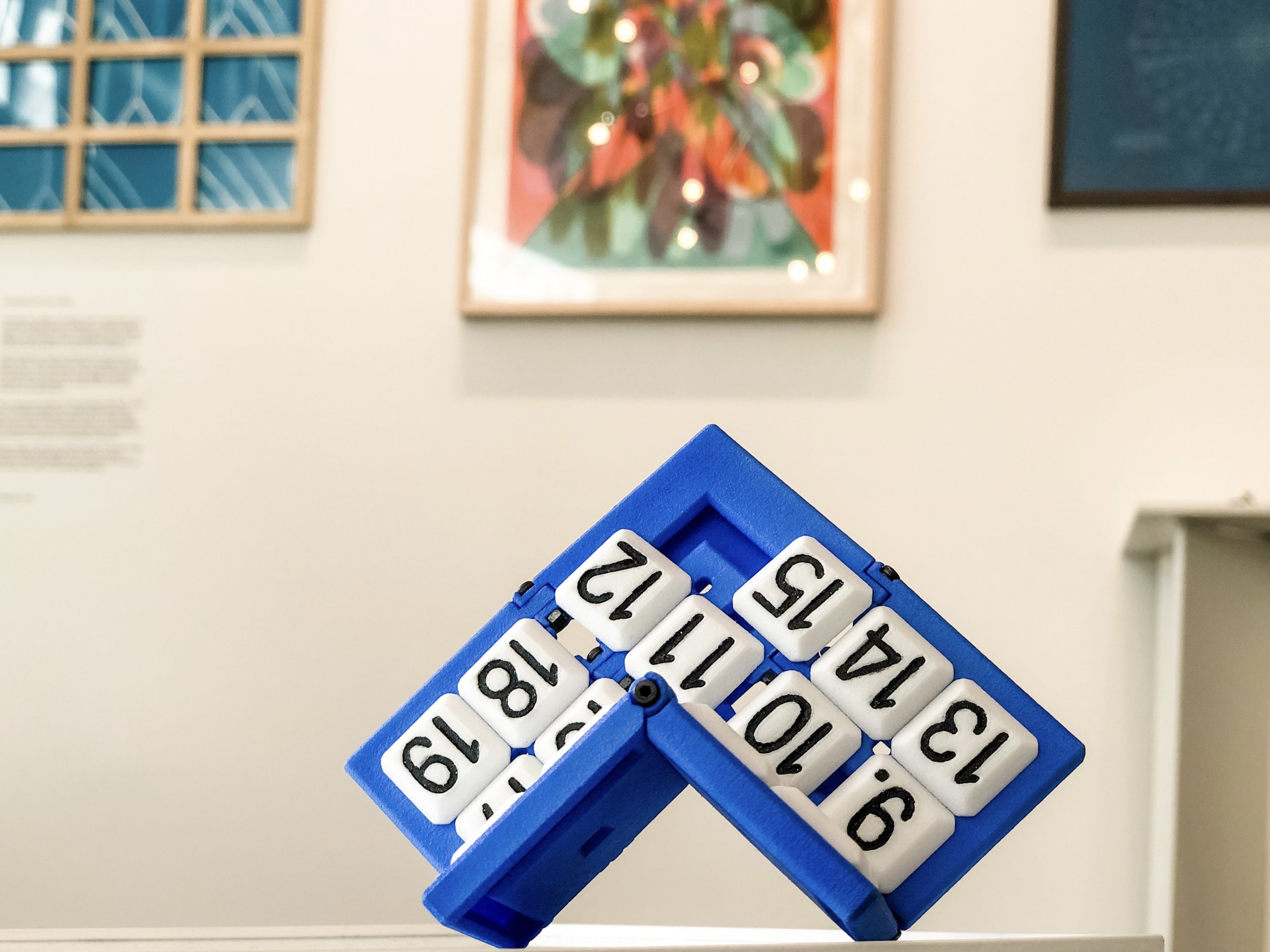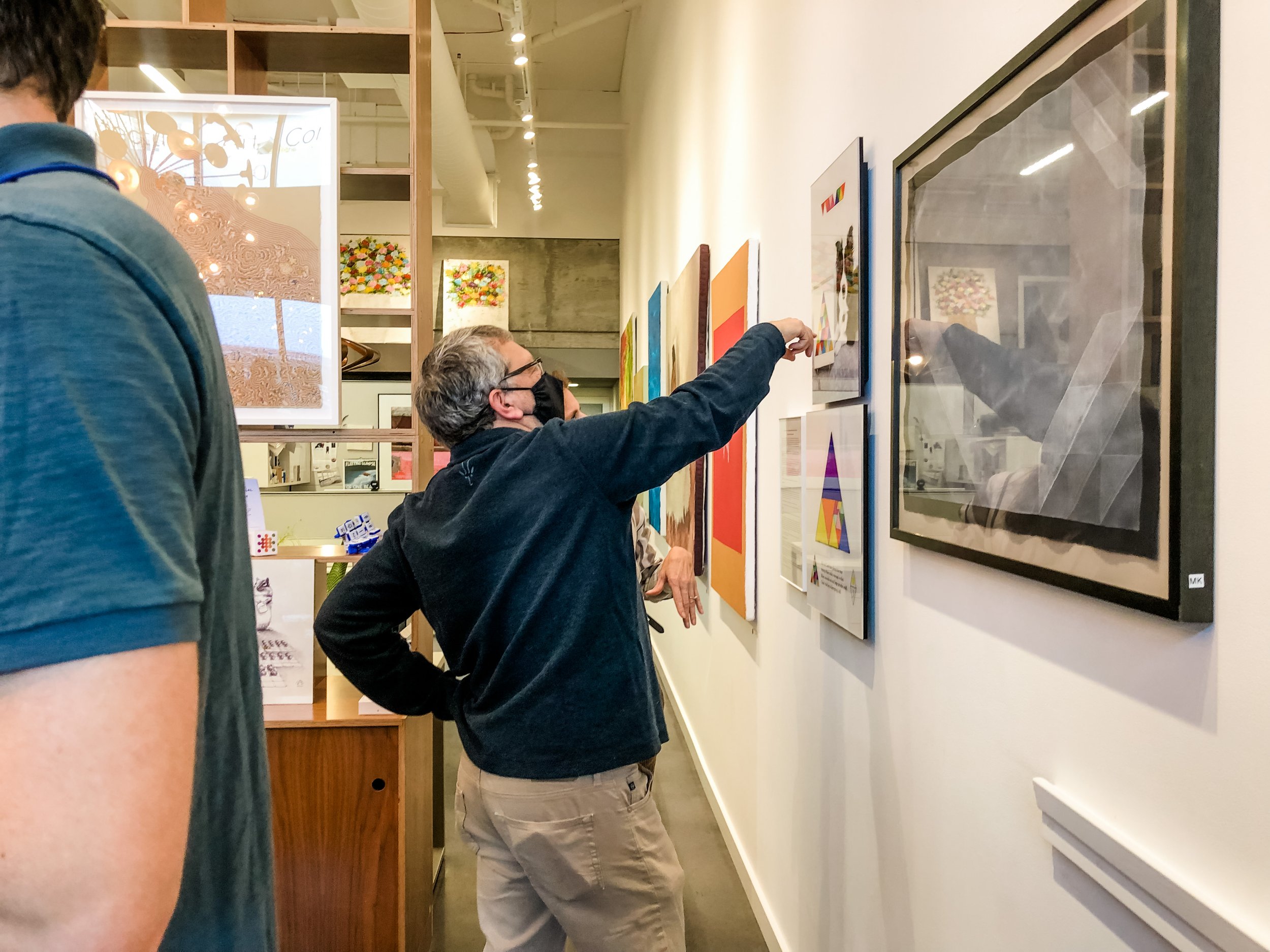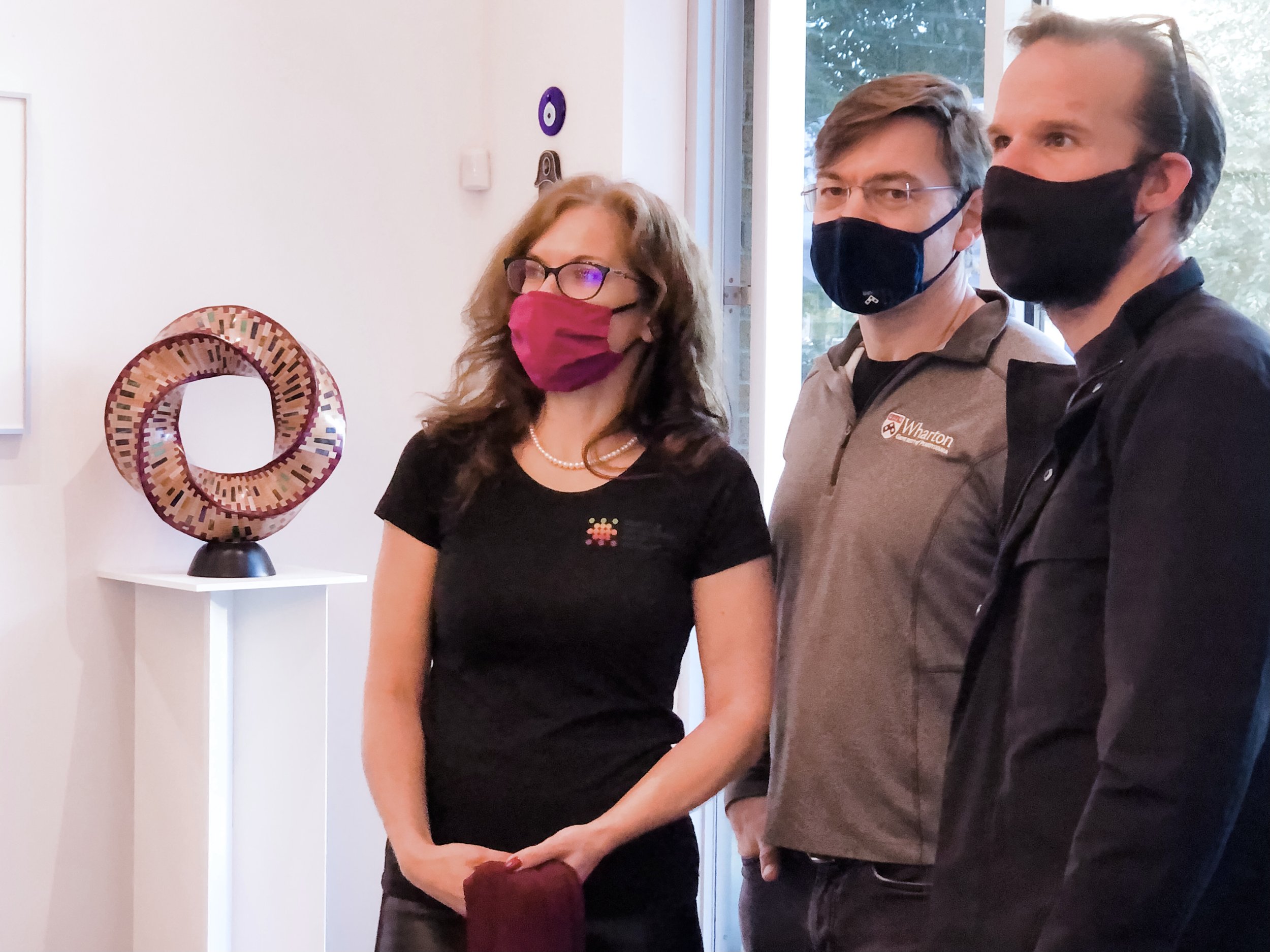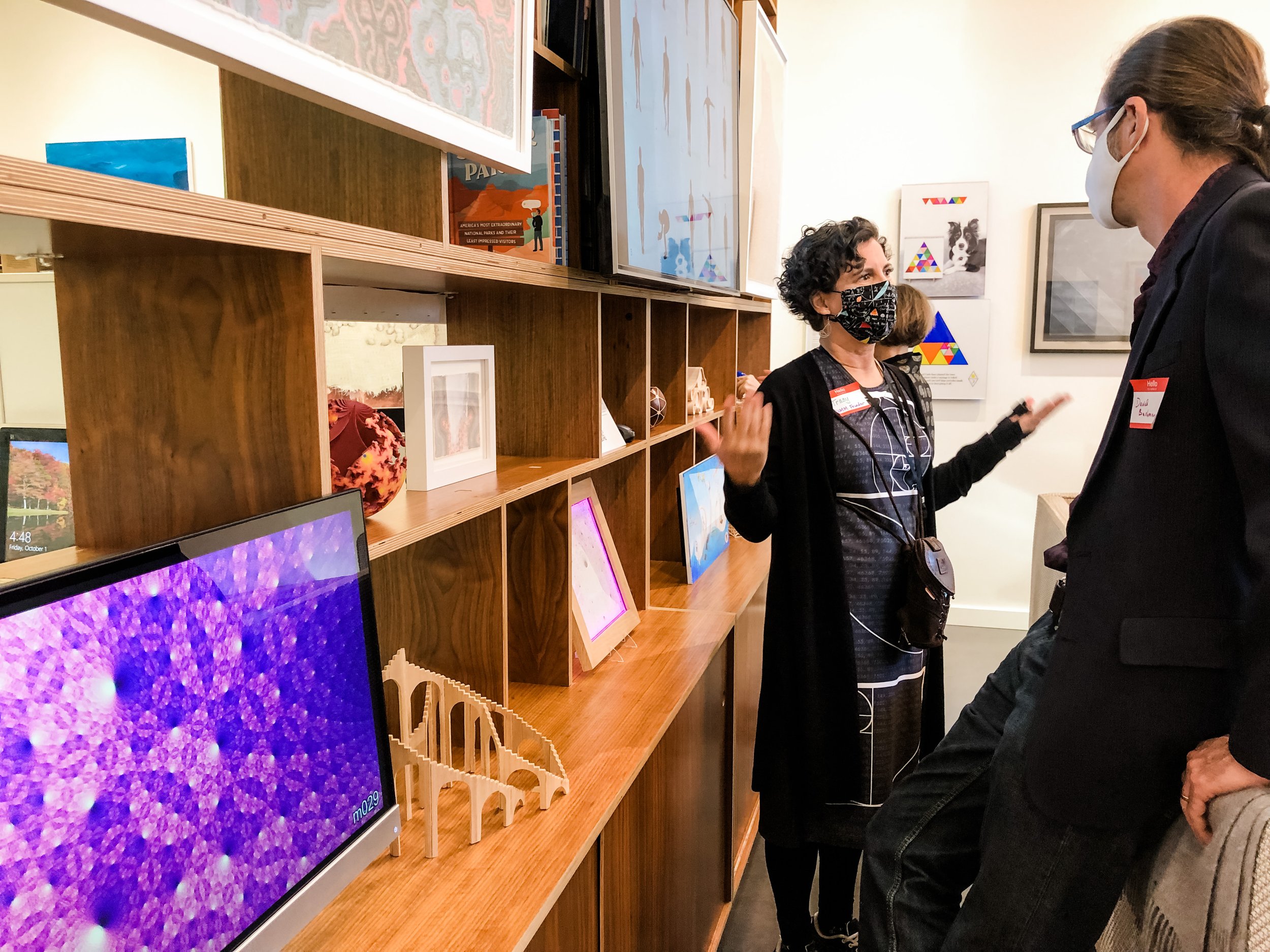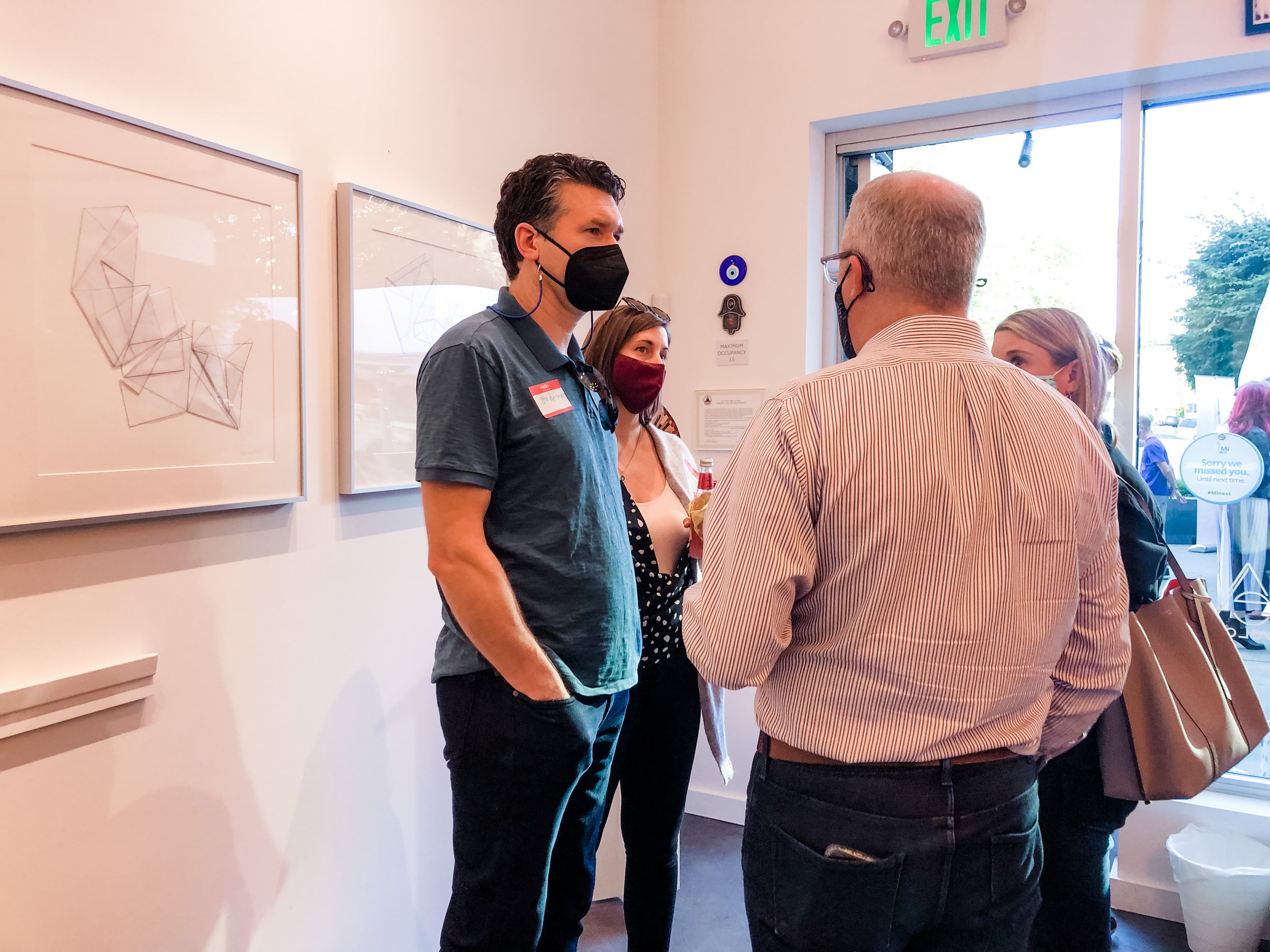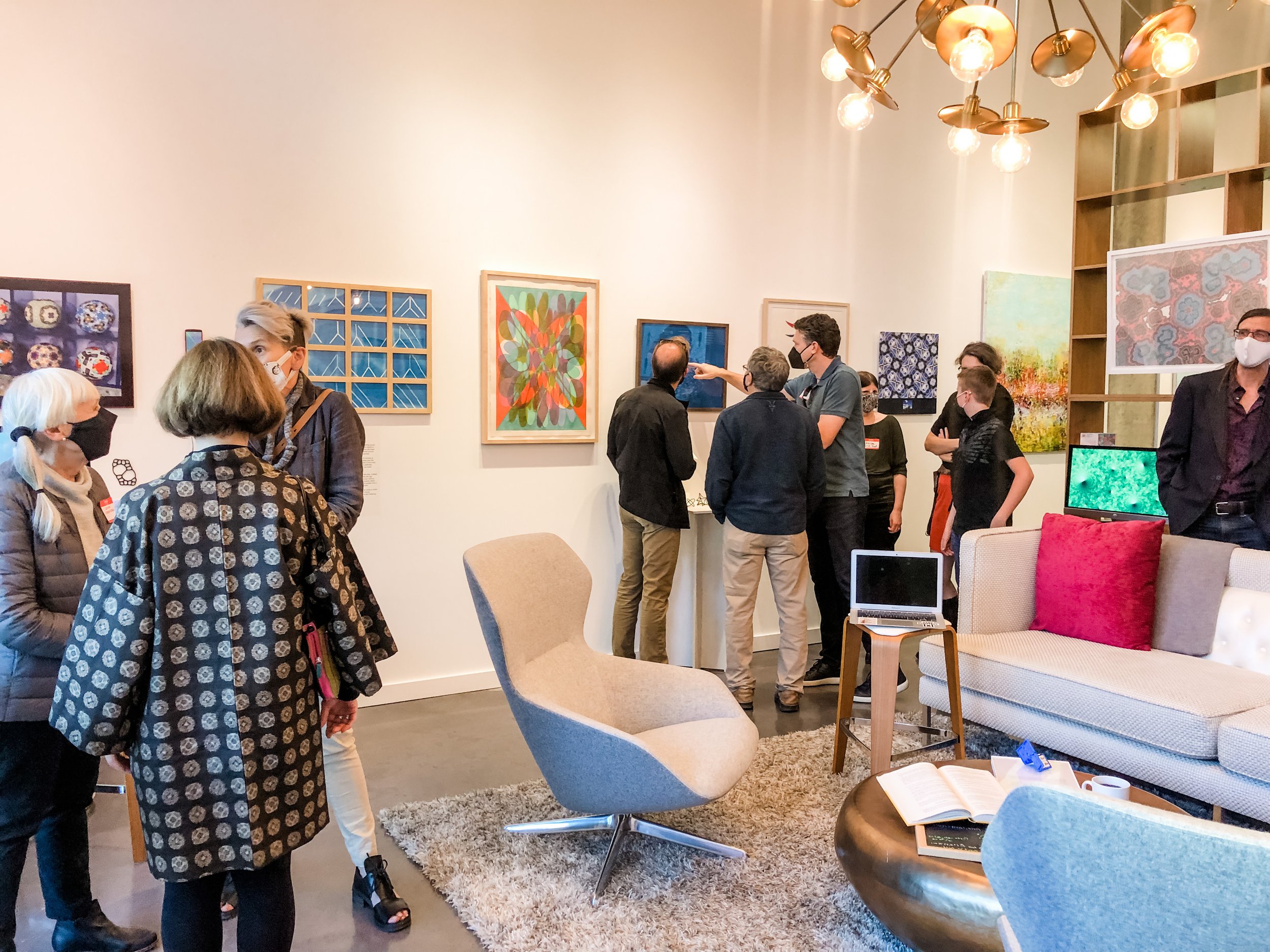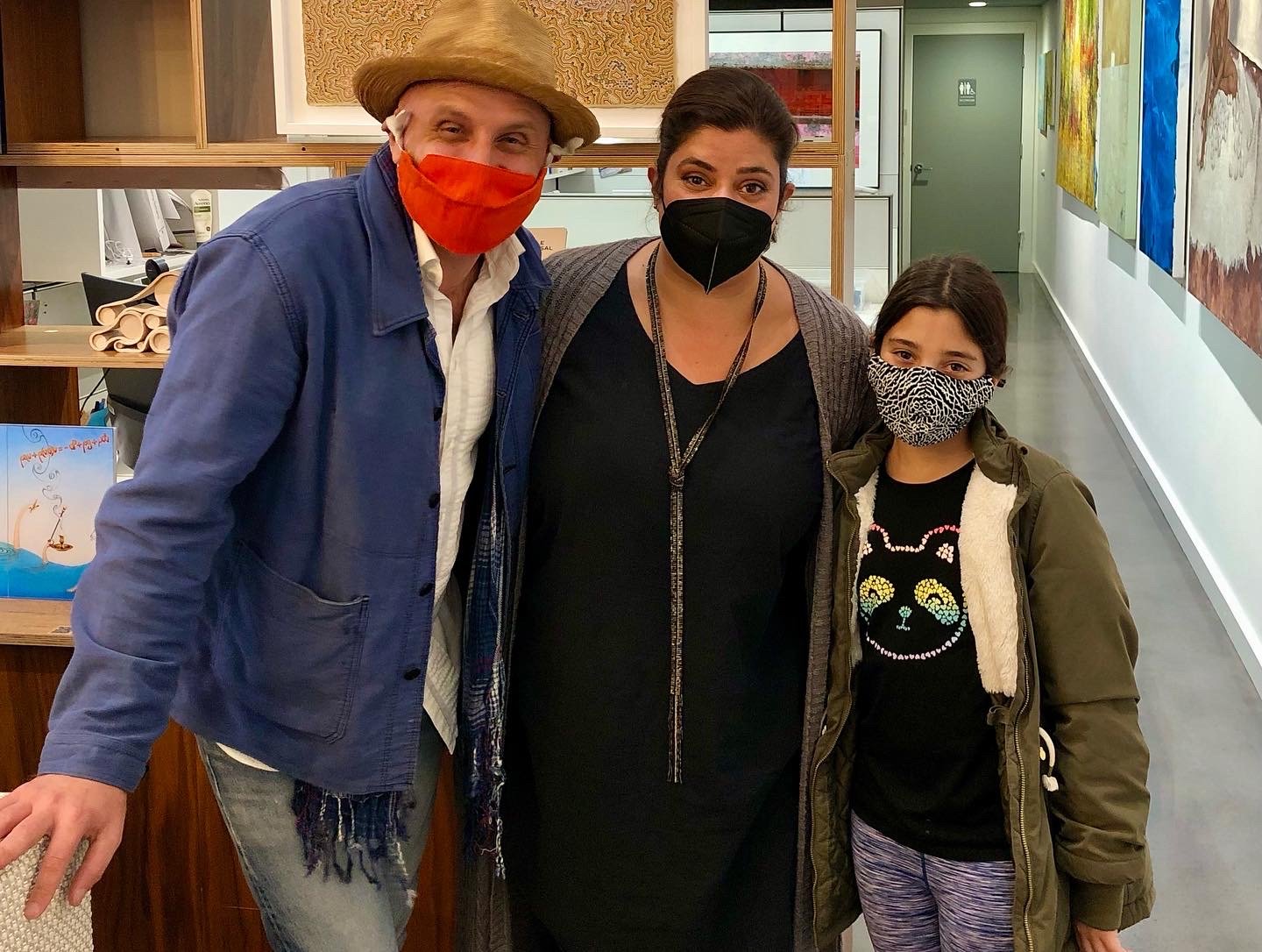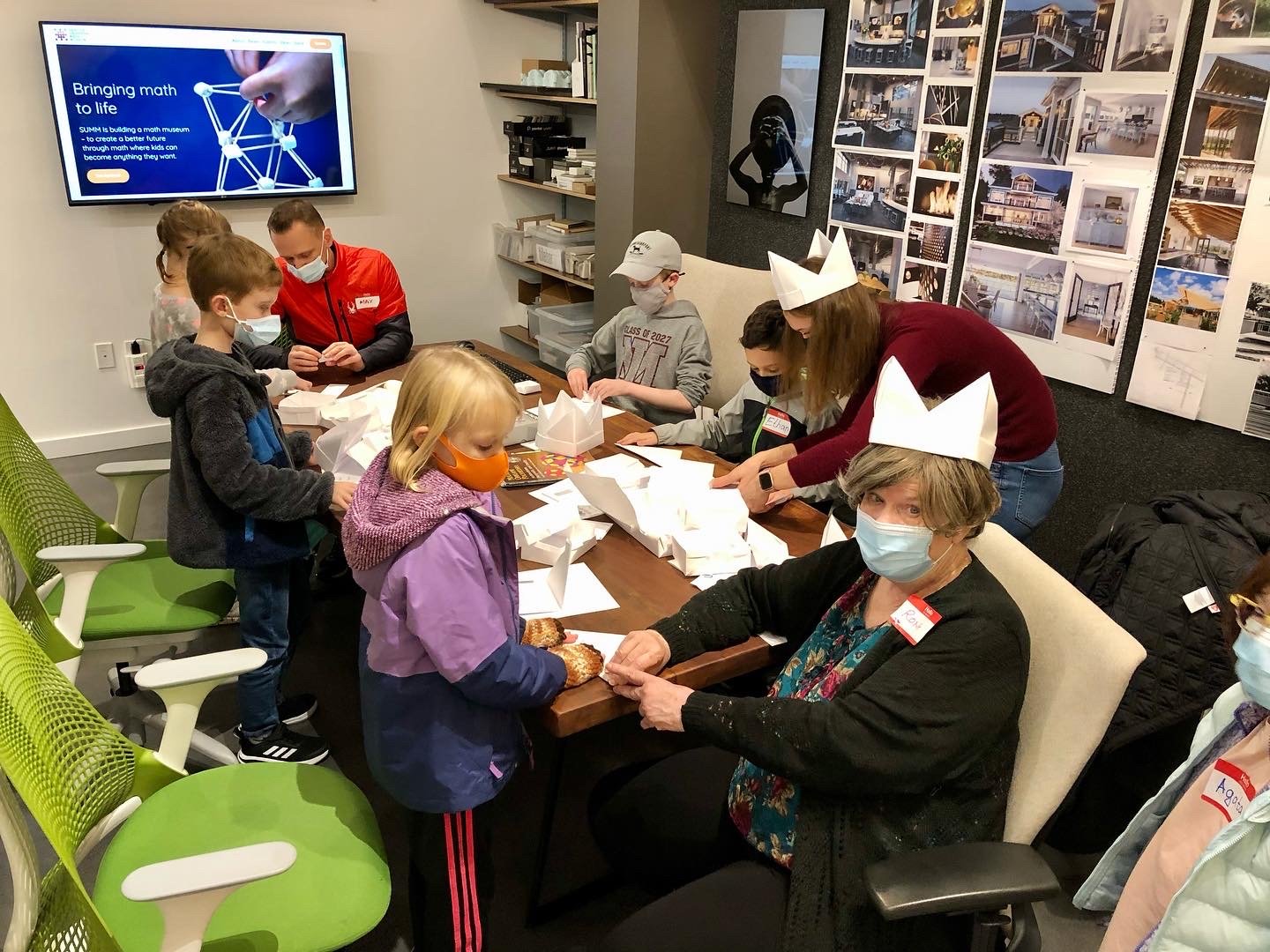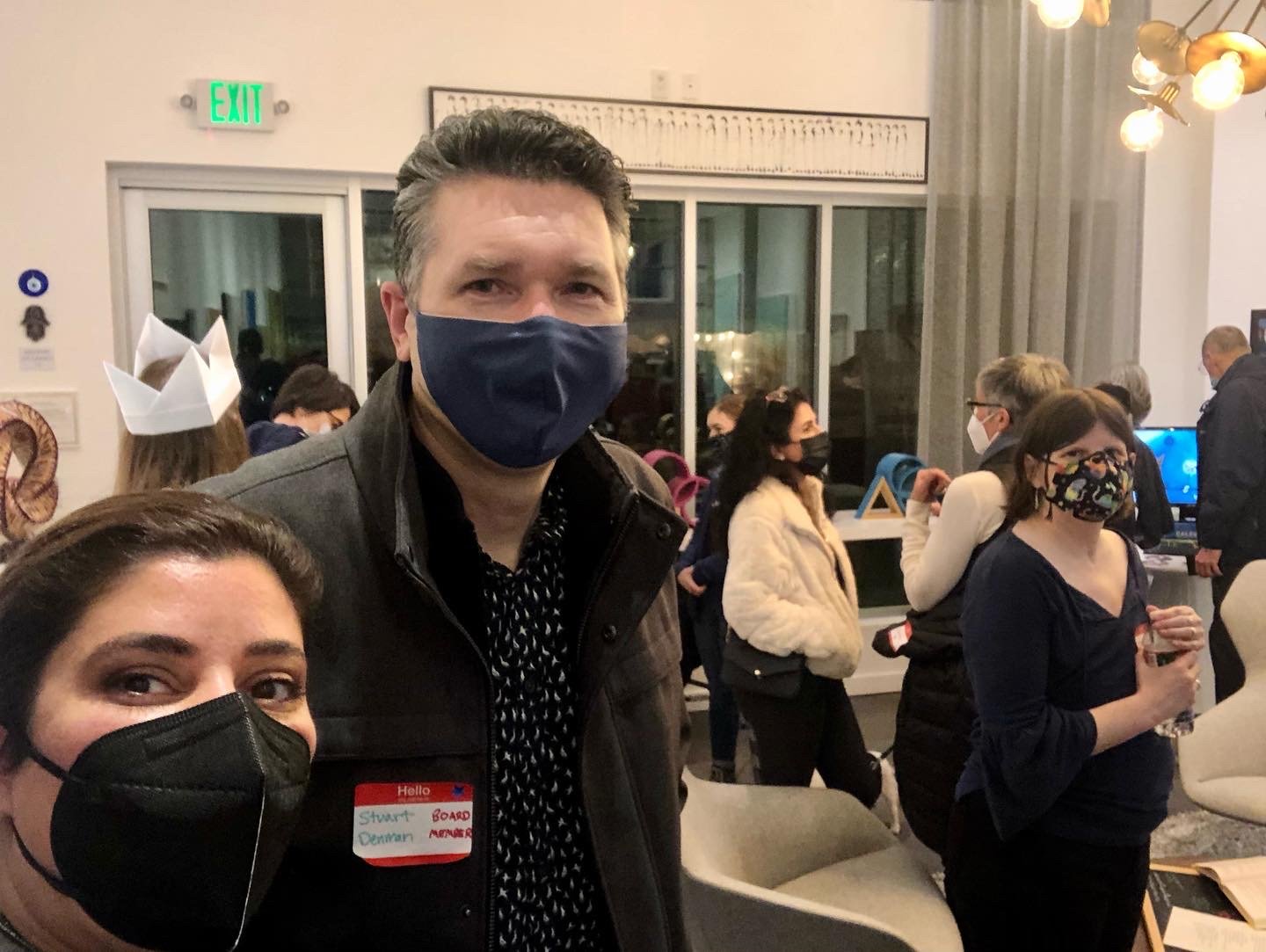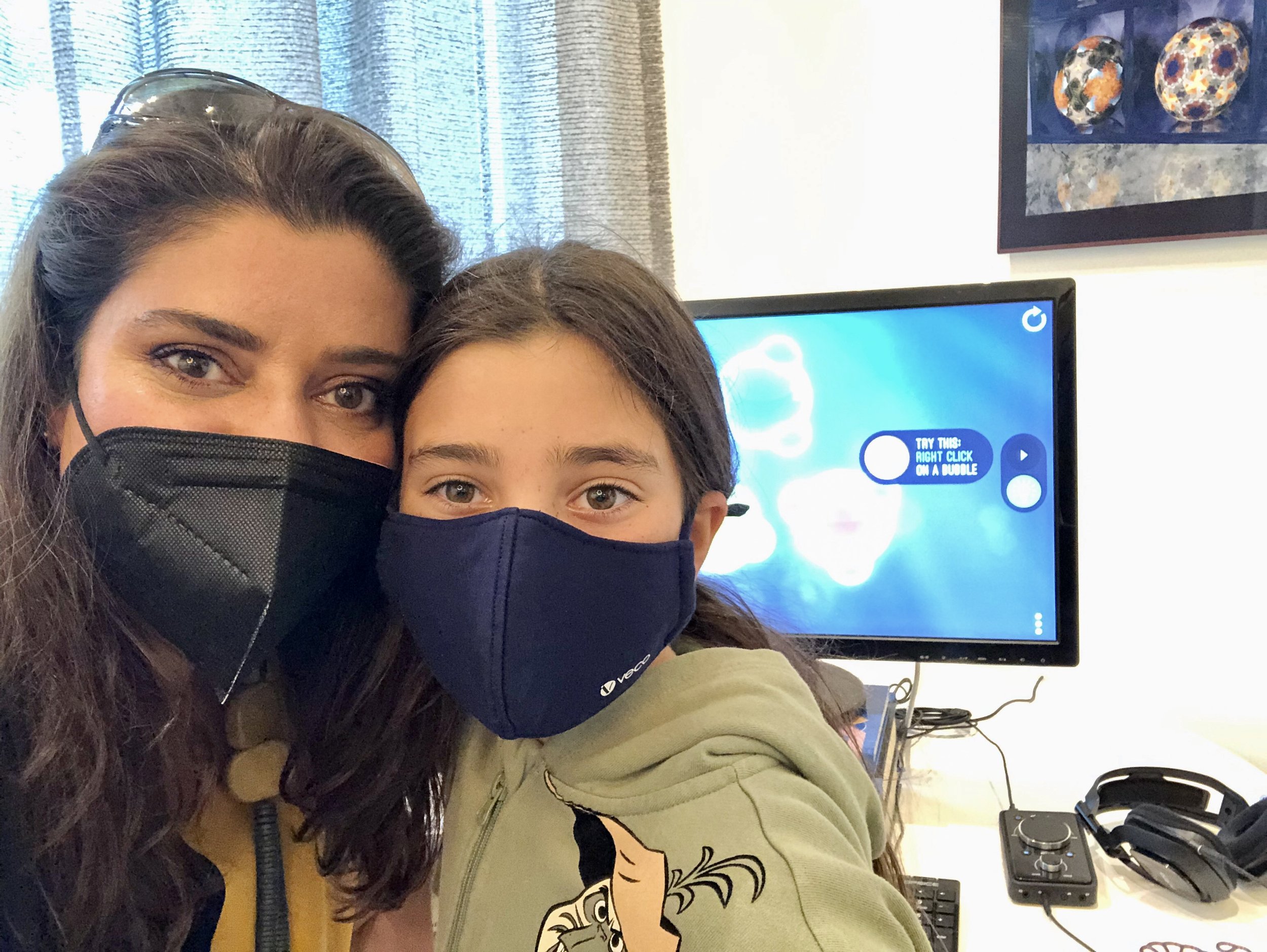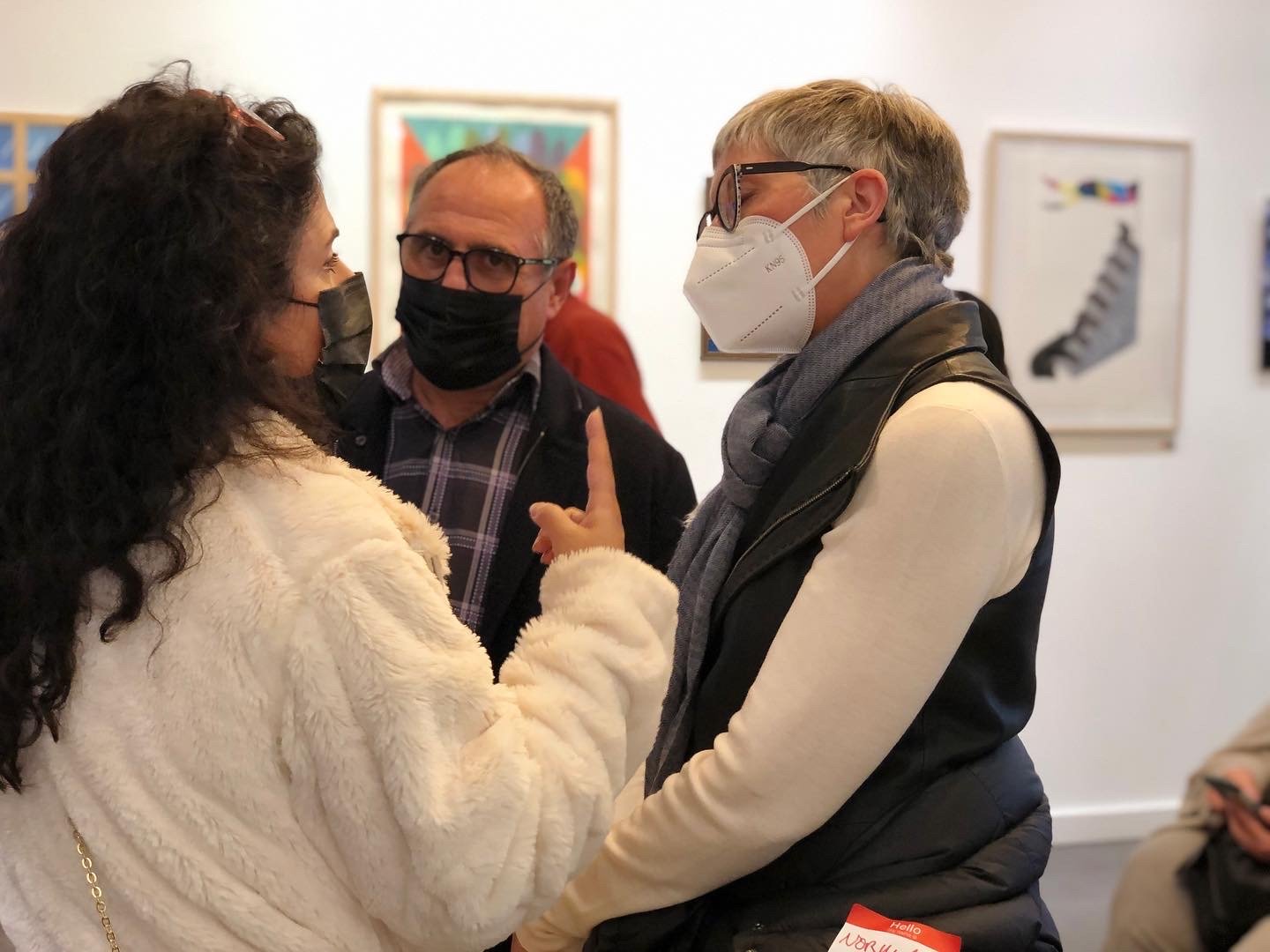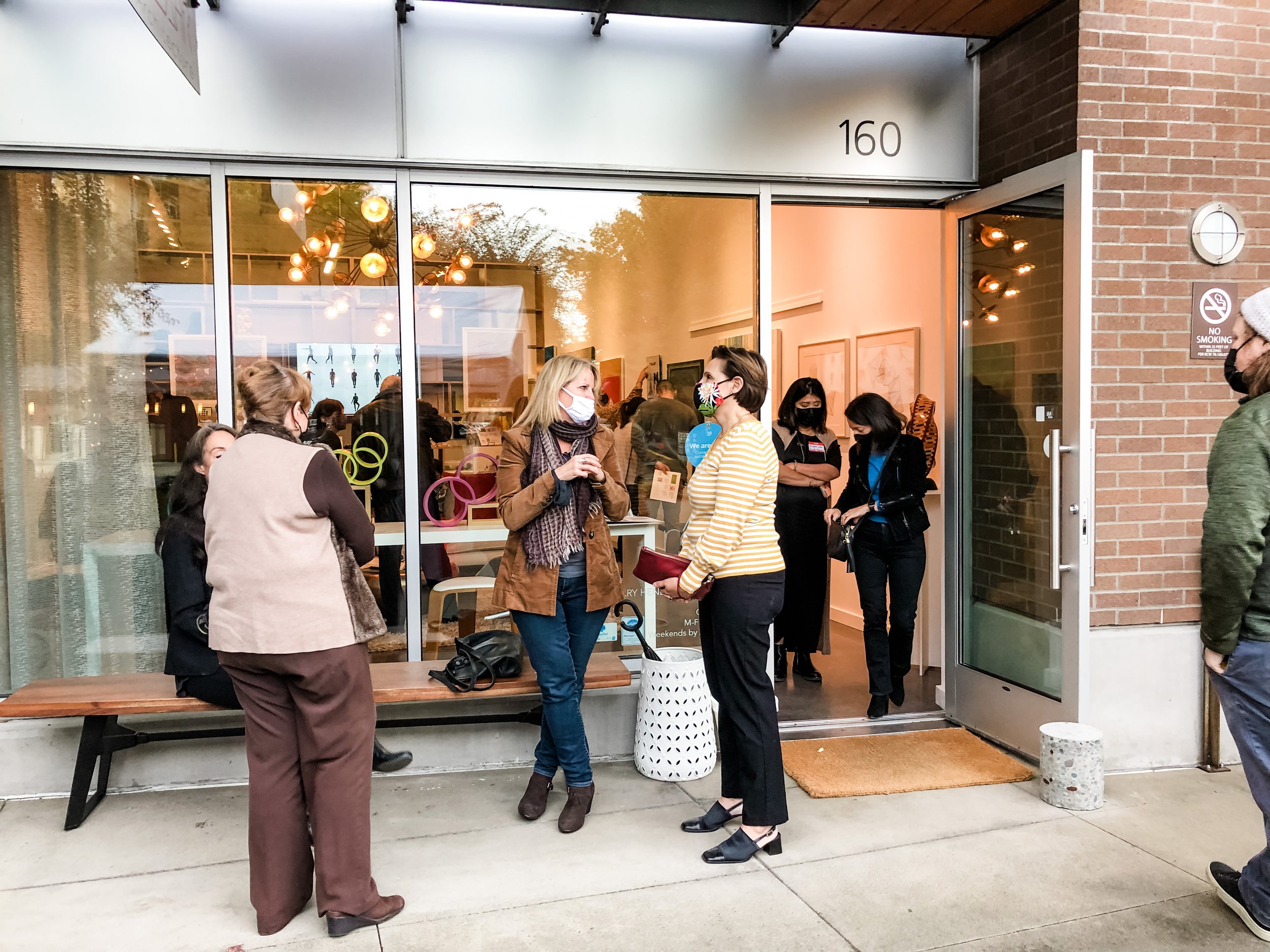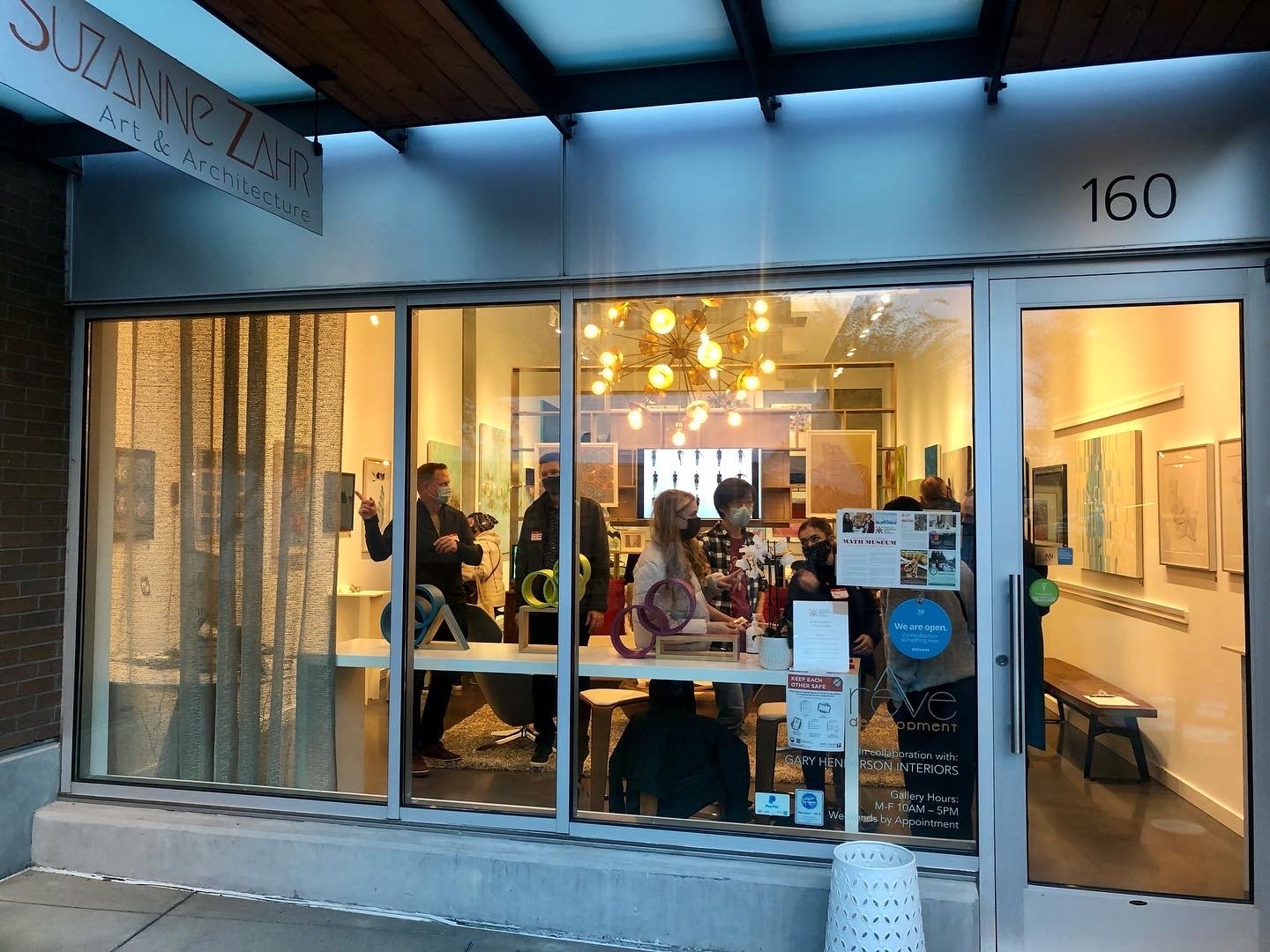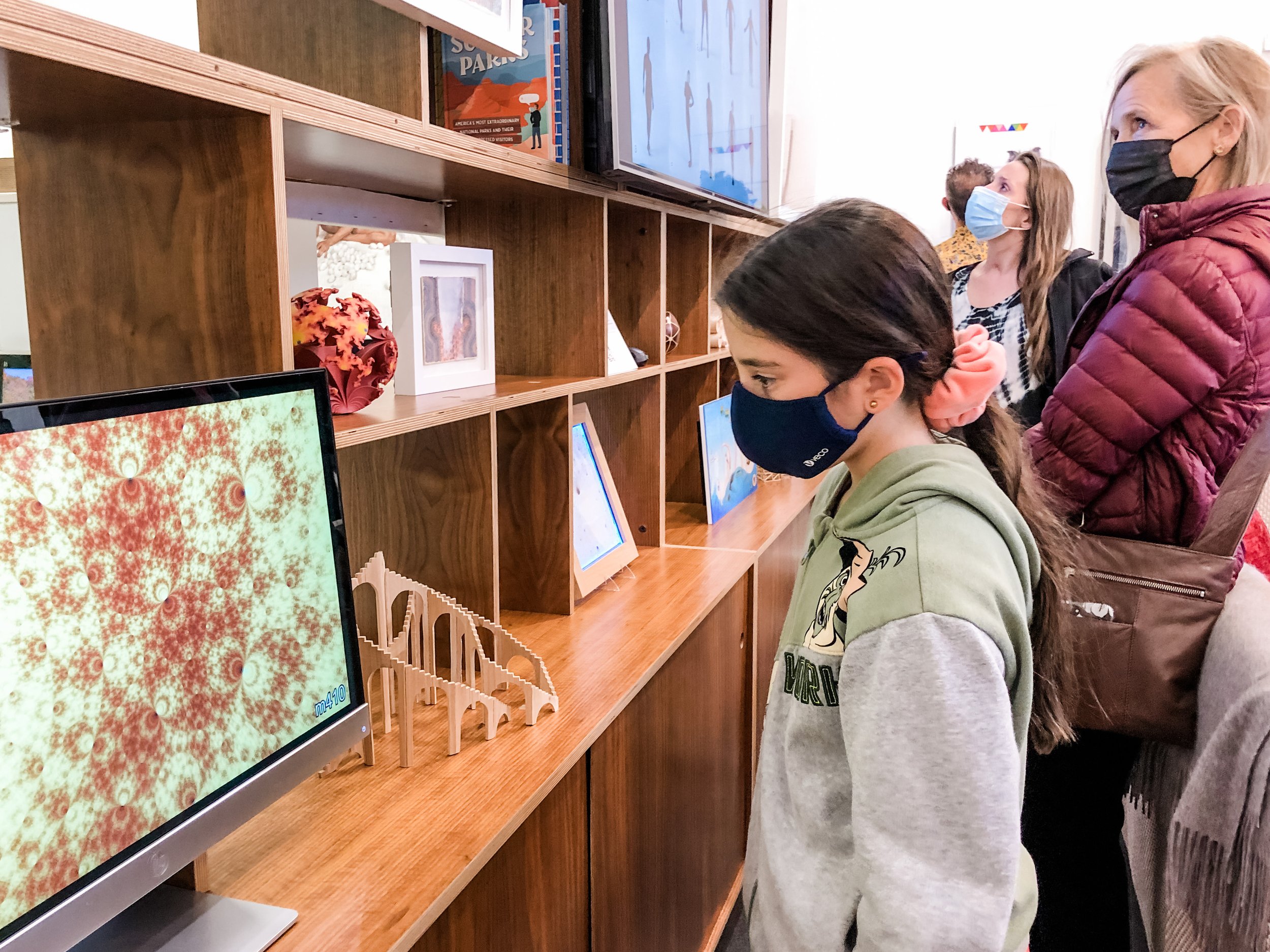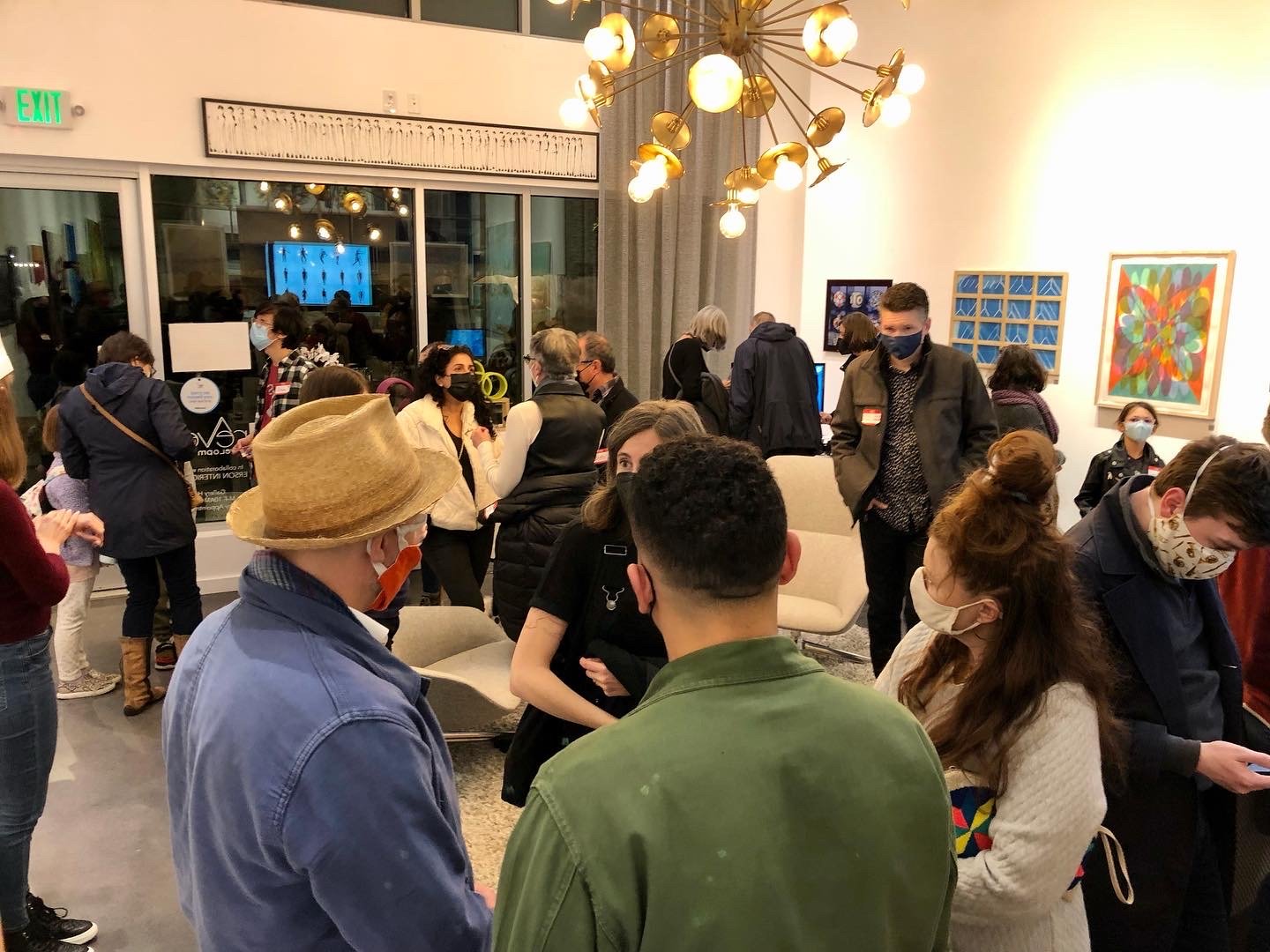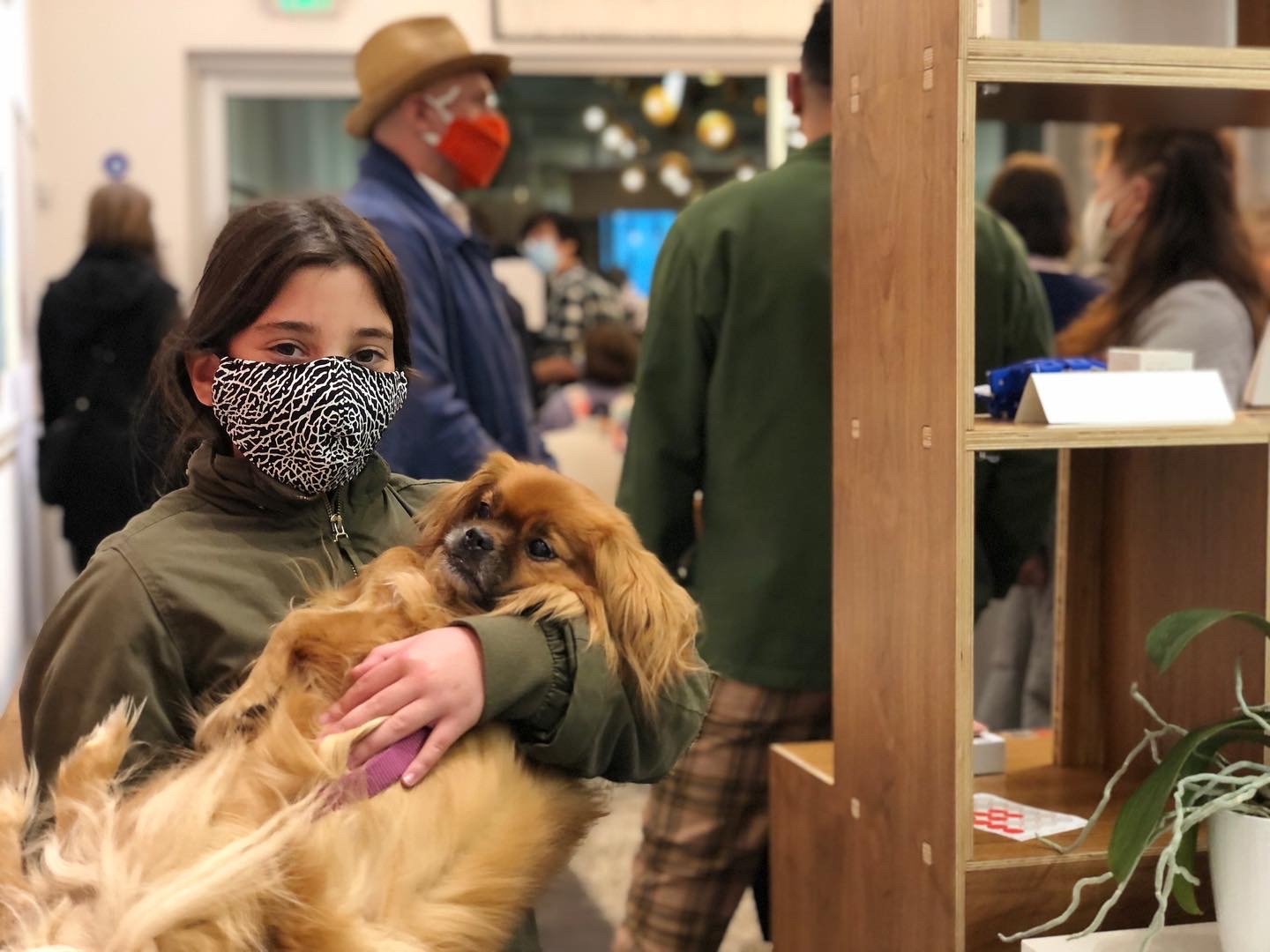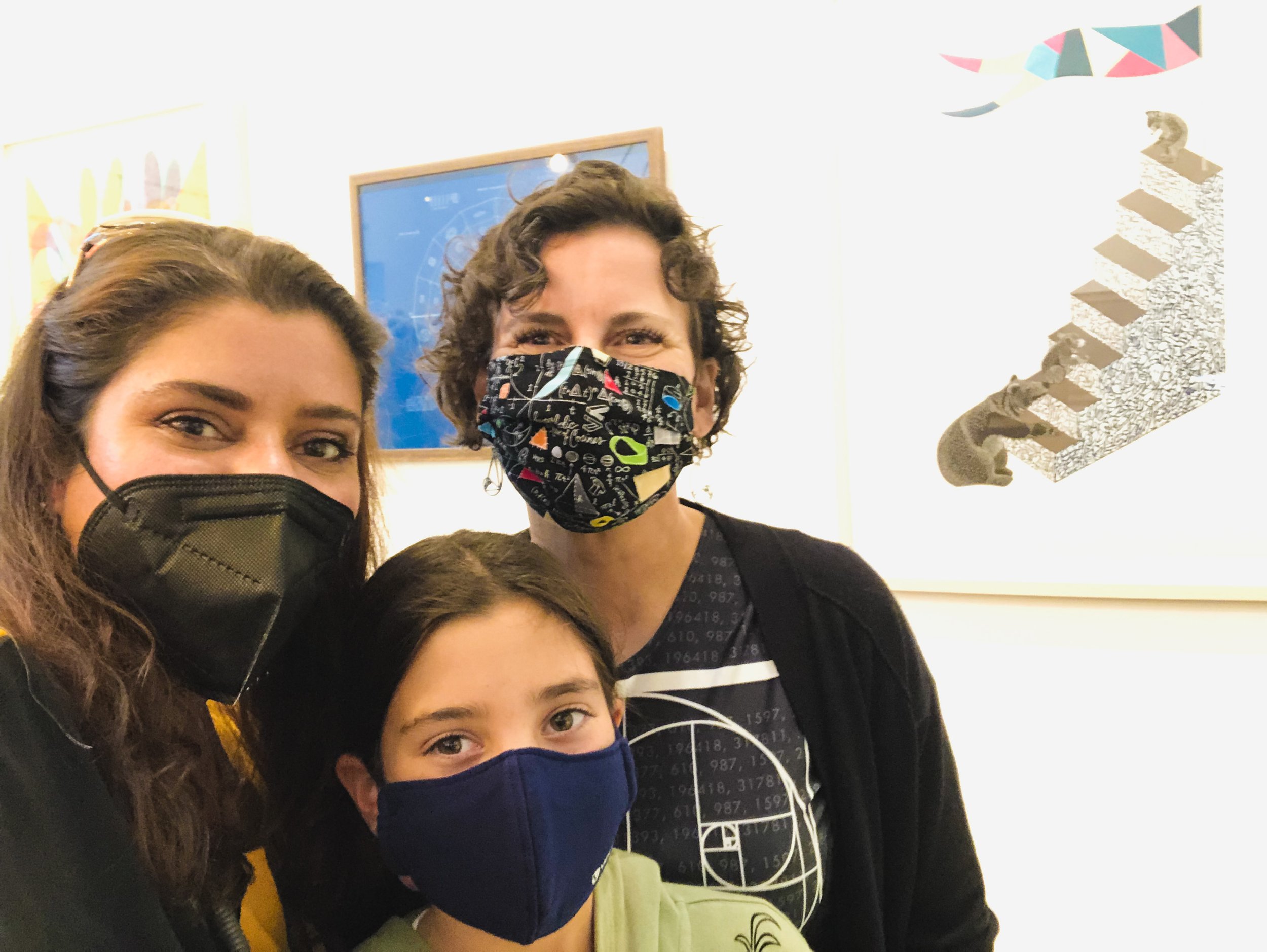OctoPi's Triptych Mural
OctoPi's Triptych Mural
By Bronna Butler
Acrylic Print of Oil Painting on Wooden Panels (SUMM)
11” x 20” x .5”
Bronna Butler www.bronnabutler.com, @bronnabutler on Twitter) is a professional artist who creates glass, mirror, and metal sculptures, as well as two-dimensional artwork, with a focus on recreational mathematics, mathematicians, physicists, and science. She frequently incorporates puzzles, enigmas, and optical illusions into her work. Bronna has a B.A. in Art and an M.S. in Accounting from the University of Missouri. After being a financial executive for 22 years for creative entrepreneurial firms in design, publishing, and telecommunications, she founded B.A. Baroque Arts, LLC in 1997, (facebook.com/BABaroqueArts). Since then, she has completed numerous commissioned pieces, including a twenty-foot-tall stainless-steel monument, 900 square feet of stained-glass windows, and over 155 oil and pastel paintings. She and mathematician Jessica K. Sklar together make up QED Arts, a mathematical art collaborative.
Octopi’s Triptych Mural
Graffiti artist OctoPi uses six of her eight tentacles to paint mathematical equations and references on the back walls of two buildings in the Mathemalchemy mathematical art installation (https://mathemalchemy.org), which will be exhibited in the National Academy of Sciences from January – May 2022. It will be exhibited several more times at various venues and be permanently installed at Duke University.
The equation graffitied by OctoPi in green and yellow paint is the wave equation, a second-order linear partial differential equation (PDE) describing wave propagation. The ripples created by the green paint dripping from OctoPi’s bucket are described by this equation! The other equation—in red and orange paint—is also a famous PDE: it’s the Navier-Stokes equation, which describes the turbulent flow of a “fluid.” This fluid can be what we commonly think of as a fluid, such as water, but it could also be a gas; the equation describes, for instance, air flow around the wing of an airplane. When a flowing fluid encounters an obstacle, the flow develops little swirls, like those in the smoke from the snuffed-out candle when it has to move around the mahlstick. The graffitied equations were designed by mathematician and physicist Ingrid Daubechies.
The triangular figure on the leftmost part of the wall is the Fano plane mnemonic, a graphic representation of the multiplication rules for octonions. (Note that this is just one of the many ways in which the Fano plane mnemonic can be drawn.) The location of this octonion multiplication table on the back wall of Mathemalchemy’s “Conway’s Curios” building alludes to the book On Quaternions and Octonions by John Horton Conway and Derek A. Smith.
The “ferocious wavelet” underneath the Fano plane mnemonic, pointed to by OctoPi’s spray-paint can, is indeed the graph of a wavelet, that is, as Ingrid notes, “a function of which a discrete family of scaled translates constitutes an orthonormal basis for the space of all square integrable functions on the line. It looks similar to, but is not identical to, the wavelet generating the Daubechies-4 (or D4) wavelet basis; it has only one vanishing moment and has slightly less smoothness.”
Our self-referential artist, OctoPi, is not only spray painting the water in which she is floating, but also painting her graffiti “tag” in the lower right. The graffiti tag includes the lower-case Greek letter π, which is the mathematical constant defined in Euclidean geometry as the ratio of a circle’s circumference to its diameter (approximately equal to 3.14159). The French phrase on her tag, “Ceci n’est pas un poulpe,” suggested by Mathemalchemist Edmund Harriss reflects her artistic background, echoing surrealist painter René Magritte’s famous painting, “Ceci n’est pas une pipe” (“this is not a pipe”). Note that Magritte’s painting has been interpreted in many ways; one interpretation is that he is suggesting that the pipe in the painting is not a pipe but rather a drawing of a pipe. However, the phrase also refers to OctoPi’s sensitivity to the popularity of octopus in the diets of many humans. There are two words in French for octopus: poulpe and pieuvre. “Poulpe” generally refers to food, and “pieuvre” refers to the bright, resourceful cephalopod in the ocean.


